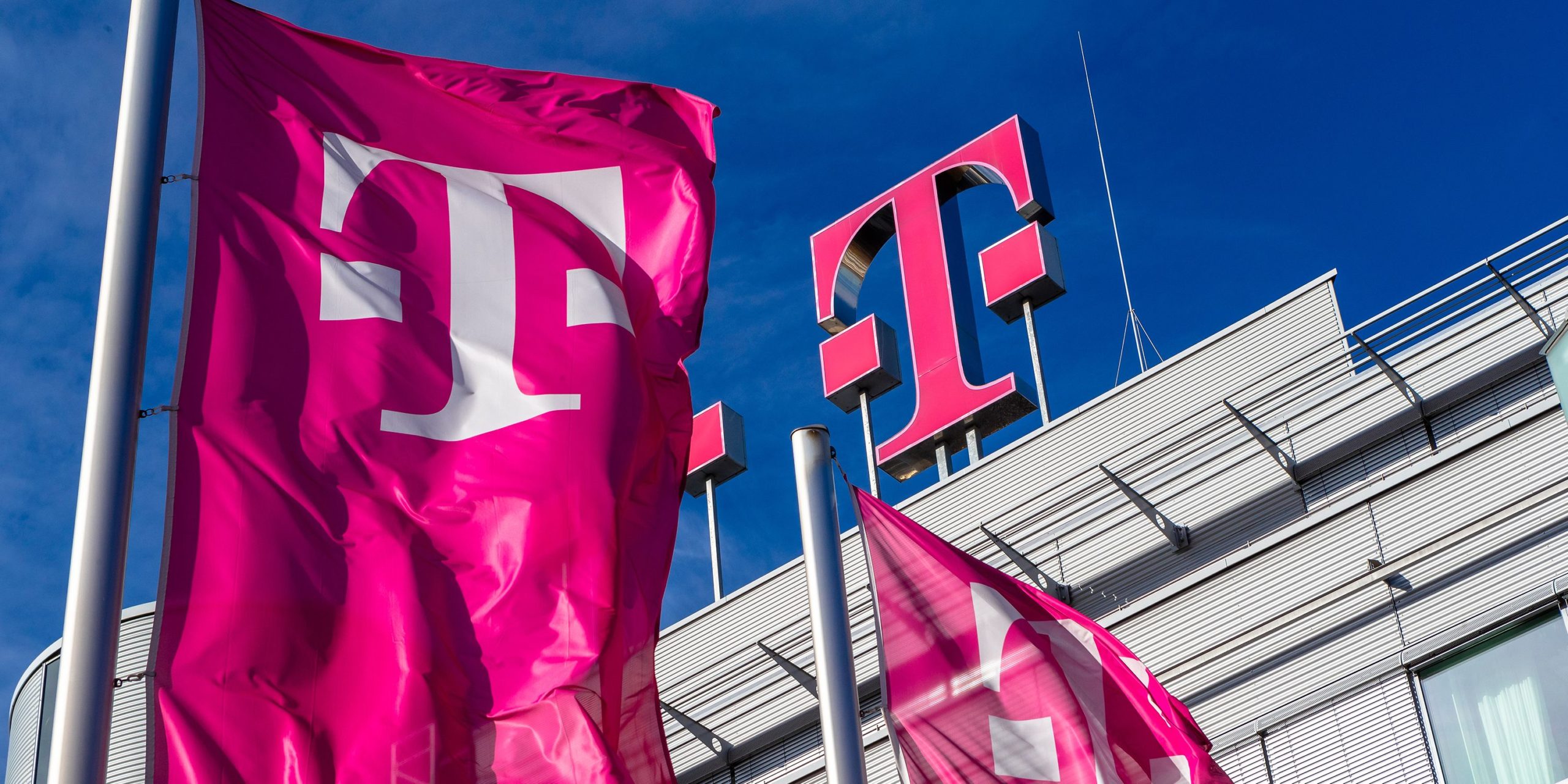Customer-graded People Experience | Sebastian Knepper

As the Head of HR PnX (People, Portfolio and Product Experience) at Deutsche Telekom, Sebastian Knepper has been at the forefront of transforming the company’s approach to employee experience.
In this interview, he shares his journey to this role, the evolution of the employee experience focus within the organization, and how Deutsche Telekom has leveraged its strengths in innovation, design thinking and service design to create a “customer-graded people experience” for its workforce. Sebastian talks about the importance of data-educated decision making, the development of the company’s employee app, and the steps taken to ensure inclusivity and compliance in their digital solutions.
Could you share your journey and experiences leading up to your current position at Deutsche Telekom? How did you come to be in this role?
In short, my journey began as a customer of the HR department. As an employee, I interacted with HR and noticed areas for improvement in the services they provided. Reflecting on my experiences with other companies as a customer, particularly the seamless digital experiences offered by smartphone apps, I saw potential for HR to enhance its services.
It wasn’t that HR was necessarily doing anything wrong, but rather that there was an opportunity to adopt a customer-centric approach. I recognized the critical role HR plays in shaping a company’s brand and attracting talent. While it’s gaining more attention at the executive level, there was a time when it might have been overlooked. Rather than simply complaining about the situation, I took it upon myself to be part of the solution. I was fortunate to have the opportunity to contribute to the transformation of HR into a more people-focused and service-oriented function, moving away from a purely administrative role. Both aspects are crucial, of course, but my focus has been on enhancing the people experience within HR.
I understand that the realm of people experience, or employee experience, is vast, and that’s perfectly fine. However, there are steps we can take to establish a strong foundation where the people function and HR are recognized as significant contributors to our employees’ day-to-day experiences. Let’s explore how we can innovate and cultivate new ideas to enhance the overall experience for our people. It’s important to recognize that employee experience is influenced by various factors beyond just HR, such as parking arrangements, cafeteria facilities, workplace technology, office infrastructure, and the support provided by experience managers, which is arguably the most impactful aspect.
Could you describe how the topic of employee experience evolved within the company?
The journey began with a focus on customer experience, essential to stay competitive in the telecommunications market. Recognizing the parallel between customer and employee experience, the company shifted its attention internally, aiming to treat employees with the same customer-oriented approach. This shift was consolidated through the adoption of design thinking methods, emphasizing the importance of considering employees as individuals with emotions and perceptions.
The company chose to start in its own backyard, prioritizing HR to enhance the employee experience within the organization. Collaboration between customer and employee experience domains emerged as crucial, with the understanding that happy employees contribute to happy customers. This evolution led to a collective realization: by prioritizing employee satisfaction, the company can effectively address business challenges and foster a positive reputation as an employer in the labor market.

How has Deutsche Telecom utilized its track record in innovation, design thinking, and service design for customers in its focus on the employee experience?
At Deutsche Telekom we prioritized service excellence, investing heavily in customer care. This customer-centric approach permeated our culture, guiding our focus on providing exemplary experiences for both customers and employees. Recognizing the interconnectedness of employee experience and customer satisfaction, we embarked on the journey of creating a customer-graded people experience.
Leveraging initiatives, such as design thinking education for our teams, we laid the groundwork for this mindset shift. Upon assuming my role two years ago, I sought to integrate this philosophy into our HR practices, supporting our HR product managers in aligning their offerings with the customer-graded people experience standard.
Could you elaborate on customer-graded people experience and why you believe it to be so important?
It’s crucial to recognize the individuals utilizing our services and products, particularly within the realm of HR, for which I am responsible. With labor markets in flux and increasing mobility among employees, their experience with our company holds significant weight. Consequently, we must view our employees and managers as customers, applying the same level of investment and attention to their experience as we do to our external customers. This concept underpins the notion of a customer-graded people experience, which serves as our gold standard.
Consider this scenario: if a manager in a T-Shop has a negative personal experience at work, how likely is it that they’ll deliver a positive customer interaction? To ensure optimal customer interactions, we must eliminate friction for employees, allowing them to focus entirely on meeting customer needs. Ultimately, the mantra holds true: happy employees lead to happy customers.
Has your approach to the employee experience changed in recent times?
COVID significantly influenced our approach, prompting a heightened focus on topics such as IT equipment, digitization, and remote collaboration. We’ve made substantial efforts to equip our employees, providing them with smartphones and an employee app that enables comprehensive HR-related tasks. While some tasks still require traditional methods like printing, we’re continually refining our touchpoints. Regarding office spaces, we’ve created more open layouts with cozy nooks for focused work, while still fostering interaction.
Our aim is to create inviting environments that encourage employees to return voluntarily, fostering being together and productivity. Not because somebody said you need to be in the office, but because people want to come to the office to meet their colleagues and to have a building and surroundings which are enjoyable through being with people. This journey continues as we adapt to evolving remote work dynamics and implement IT solutions to support dispersed project teams, both locally and globally.
Is your employee app a homegrown solution?
Yes, for instance, inclusion of the visually impaired. How can they navigate with an app? So, we need to have a solution that takes care of all our people, not just concerning data privacy, but also to address diversity and inclusion aspects. And we’re constantly working to make all these things compliant to their causes and their needs.
It’s very important to us and an especially important focus for us in Germany; we are trying to be as inclusive as possible in real terms and not just on paper. This is very important for our employees – that nobody is left behind here, that we do our very best and the app is supporting these efforts.
Since you began working on your PX Lab project three years ago, how has it evolved, and how did you secure the formal authority to start implementing changes with HR product managers and teams? Additionally, could you share how you built ownership of this initiative?
We began from scratch as a team, leveraging the existing human-centered and customerfocused mindset prevalent throughout the organization. Recognizing the complexity faced by product managers in understanding the entire customer journey within HR products, we assembled a team comprising project managers, UX designers, data analysts, and design thinking facilitators. Our approach prioritized data-educated decision-making to identify areas for improvement in the HR product portfolio. Regular surveys provided the foundational data for our initiatives.
Over the course of a year, we developed a consulting toolbox to support product managers, including resources like designers for mockups and interface ideas. We emphasized the formula: people experience equals customer experience equals business value, which resonated with senior leaders. Then, pilot projects validated our approach, leading to widespread recognition and support for our team. Now, with established methods and toolboxes, we’re readily accessible to support both employees and managers, fostering inclusivity in enhancing the overall people experience within HR.
How have you built up your team and expertise?

We receive support from internal staff and leverage our internal design capabilities. We have one designer in my team and we just hired a second. Additionally, we’ve hired specialists to assist with digital process and interface design. While such expertise isn’t always readily available, the growing digital landscape has led to an increase in UX designers focused on UI/UX design. We have external consultancy support on UX because that is something as a capability we are missing in HR. Currently, our team includes five people who contribute significantly to our efforts, particularly in target group ideation and touchpoint design.
Can you share how the acceptance and impact of your offering has developed?
Initially, we presented our offer and approach to the HR Department, which led to an influx of requests for support. To prioritize these requests, we assessed the volume and perceived importance of each product, balancing daily usage and reputation impact. We typically manage two to three projects concurrently.
As our visibility grew, we established collaboration with social partners to ensure legal compliance. However, we recognized the crucial interface between HR decisions and IT systems. Programming these decisions into our systems effectively enhances user experience. It’s essential to seamlessly integrate digital processes into our workflow to ensure user adoption and satisfaction. This understanding has shifted the mindset of our product managers, emphasizing the importance of user experience beyond contractual agreements.
How do you get to the root cause of a challenging employee experience?
Our approach is data-educated and evidence-based. We regularly survey strategic HR products to gather feedback from employees and managers, identifying areas for improvement. This data serves as the foundation for our PX Lab, where we conduct additional surveys to quantify the issues. Before any intervention, we ensure accountability lies with the product manager, emphasizing the importance of clear ownership. By focusing on data from start to finish, we cut through the noise and biases and address real issues effectively, evaluating the impact of our interventions.
What’s the drum beat that you take with the team in solving a challenge?
We recently addressed communication fragmentation within our organization. By analyzing historical data on email engagement, we discovered that recipients were overwhelmed by the volume of communications, leading to low engagement rates. Through data-educated insights, we cultivated a common understanding among team members, prompting a collaborative effort to redesign our communication strategy. This involved a three-month co-creation process with employees and managers to brainstorm alternative approaches.
Once a solution was developed, it was handed over to the responsible product manager for implementation. Larger projects, such as app development or global HR communication transformations, typically require a three-month timeframe, while smaller tasks, like online form redesigns, can be completed within days or weeks. The product manager receives a menu of options or solutions that were validated by employees and then they have the ownership of deciding which one will be implemented. At the end of the day, they are accountable.
What input goes into the design process of your solutions?
Much of our initiative stemmed from HR-wide design thinking education, which has been instrumental in guiding our current phase and fostering openness to the design process. We recognize the importance of integrating customer feedback and expertise into our solutions. While product managers bring valuable content knowledge, we also leverage the expertise of design professionals to ensure effective implementation.
This collaborative approach, which includes input from employees and managers, has proven effective. Additionally, involving IT and process experts, as well as hotline support, ensures comprehensive understanding and support for newly integrated HR products or significant changes. This inclusive approach is integral to our people experience efforts from the outset.
As regards feedback, could you tell us more about the ethos behind emotions? How do you touch emotions?
We distinguish between employee feedback received through surveys, managed by a separate team, and emotions triggered by HR products and processes. Understanding the subjective nature of individual experiences, they emphasize the importance of quantitative data to gauge satisfaction objectively. Co-creation sessions involve physical collaboration, acknowledging the emotional aspect while striving for practical solutions.
They aim to mitigate frustrations caused by ineffective HR processes, recognizing their impact on employee interactions with customers. Through data-educated approaches and proactive measures, the company seeks to minimize friction and optimize employee experience to enhance overall customer satisfaction.

How do you address the needs of managers and involve them in the design of solutions?
The manager experience is addressed through digital solutions aimed at facilitating interactions and enhancing engagement. Features like notifications for team members’ birthdays and anniversaries are integrated into the platform to ensure managers acknowledge and celebrate these important occasions, positively impacting team perception. Co-creation sessions with managers led to innovative ideas, such as a calendar for personal milestones accessible via the app.
This feature enables managers to receive timely reminders and take action, like ordering gifts, fostering a supportive and appreciative work environment. Through collaborative efforts and user-driven design, the digital solution aims to support and enhance the overall manager experience within the organization.
What are some of the achievements over the last three years that you’re most proud of?
I think first of all, the understanding that people experience is something which is and needs to be taken care of. Although everybody has a common sense understanding that ‘happy people = happy customers’. People perceive this customer experience as value. I also understand that from the microeconomic perspective.
But I’m very proud that we put together the toolbox based on existing elements – we did not try to reinvent the wheel. This is common sense brought into the workplace and transferred into methodologies, into competencies and creating a consultant’s approach or consultancy approach for our people within the organization. That’s something I’m proud of.
What learnings do you see as relevant also for the larger community to think about?
One important aspect I found out first of all is that data is key. If you don’t have a strong data-related, data-founded argument base, then you will always be talking “noise”. You need data to prove your cause, prove your arguments and prove your impact. That is very, very important.
Based on what you have achieved this far, what are your hopes and dreams for the next two to three years?
First of all, I hope that this methodology we came up with will stay. I think people experience or employee experience as a requirement will stay. I think the honeymoon phase for this topic is over and all this very popular human-centered design focus is a bit more sober right now. When you look back at the customer experience world, that was also a big wave of making human-centric design great for our customers and then co-creating products for the marketplace.
It’s now the turn of people experience and employee experience. We found a way to handle it and looking forward to other years hopefully as an integrated regular part of management of the HR portfolio, I would say that would be my dream. Not that we only go there product by product, step by step….but this is something that is integrated into the product life cycle process for us.
What would you say are the missing elements to make that happen?
Of course, the easy answer is resources, but sometimes it’s just time you’re missing. You may sometimes use data to justify putting resources on a certain topic. We are now piloting the integration of feedback from our customers within the experience.
So, when you start the HR process or service, there’s already some integrated feedback to work with. Then we go deeper and find out if there’s any friction that makes the time much shorter for the product manager to react on the friction. That is something I would love to see in two or three years for all the HR processes that are digitized and if possible to integrate this ongoing feedback option. This needs to be integrated into the experience in the IT processes and its maintenance needs money. This is the kind of investment we are looking for, and hopefully, we’ll get it.
Thinking about the discipline of EX in in general, what opportunities and challenges do you see in the future?
From the HR perspective, the big opportunity for us is to really show that we can be a prime lever when it comes to enhancing employee engagement. However, there are also other areas of the company where we could perhaps have an even greater influence. But it’s always important to start with the man in the mirror. And when you are working in HR, consider that you have a big influence – not only measuring employee engagement, but also contributing to positive employee engagement.
That’s very important for us, especially as I said earlier, when we talk about retention and branding. It’s also important for us to consider EX and make it a fully integrated component. When you introduce new HR technology into the company, from the very start you try to find out how this could be integrated into your company culture, into the corporate design. For instance, we have just introduced a large new vendor for our skill management and right from the start we supported it with the PX Lab to create the look and feel of the front end to ensure it fits into our culture and our corporate design.
Then there’s the challenge of AI that many believe will lead to more personalization of experiences. As an example, imagine telling people ‘Here is a survey and it’s totally anonymous’. And then they receive a reply with ‘Thank you (person’s name) for your survey’. I think we need to be very careful when it comes to personalization at scale because. it is complicated to work with the personal data of employees.
So that’s something we need to consider and be very careful about to ensure we have a balance between personalization and meeting all the data privacy requirements. It’s about not breaking the trust, we need to be very open when we introduce AI solutions into the workplace so that people understand what data is used, where there is a model learning and training on that data and what purpose the data is used for. This is very important for us and it also challenged me to consider all these aspects when introducing AI into the workplace.
Interview by Sander de Bruijn

Sander is an experienced leader in Employee Experience, Customer Experience and Marketing & Communications with a footprint in Financial Services, Telecom, Professional Services, Media and Entertainment. Over the last 20 years, Sander has managed a vast variety of EX and CX initiatives, ensuring delivery in complex business environments to thrive to make measurable impact.
For more than 15 years Sander has built and led high performing teams with strong people skills and strong personal involvement. For Sander, working as a consultant and coach with (HR) Leaders and Employee Experience professionals allows to do what he loves; making the complex simple and helping others thrive to make measurable impact.




